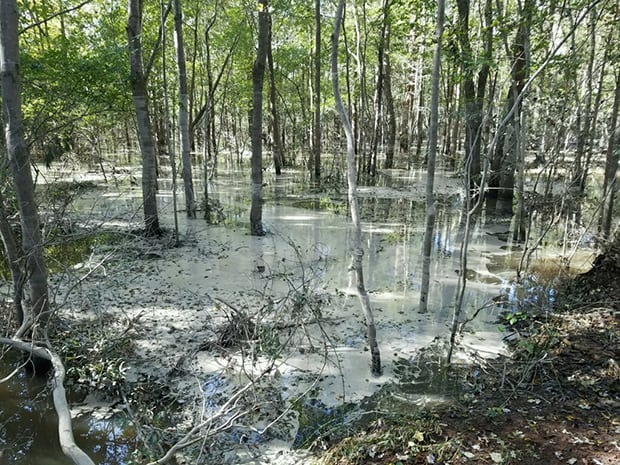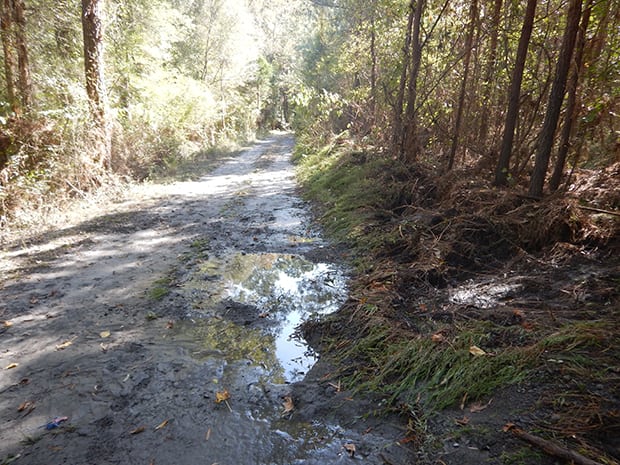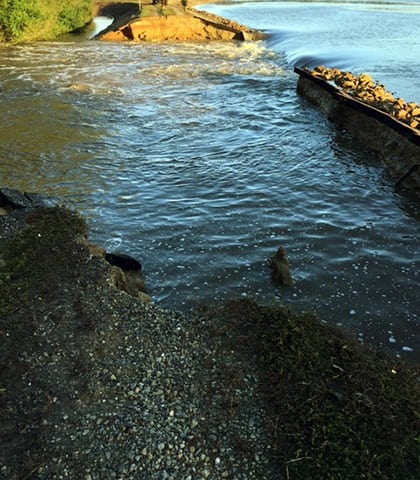H.F. Lee Coal Ash Spill Puts Duke Energy Under the Spotlight Again
Although Duke Energy maintains that “only very minor erosion of material” migrated from an inactive coal ash basin on the H.F. Lee Power Plant site, several environmental advocacy groups are concerned that the spill has dirtied North Carolina’s Neuse River.
“This spill is easily visible to anyone in a boat. The area looks like a winter wonderland of toxic coal ash as it has coated the water and trees. It is hard for me to understand how both Duke Energy and state regulators failed to notice such a large area of coal ash contaminating the Neuse River when they claim to have inspected these very ash ponds on Saturday,” Matthew Starr, Upper Neuse Riverkeeper, said in a statement on the Waterkeeper Alliance’s website.
Duke Energy reported that a site team did observe “cenospheres” in low-lying areas (Figure 1), and that the company had notified the state of the finding. According to a Material Safety Data Sheet (MSDS) produced by Pantheon Fze (a company that markets specialty chemicals), cenospheres are “not considered to have any hazardous components.” The MSDS says cenospheres are environmentally benign, although it does prohibit “discharge into canals, drains, or water courses.” Duke said the majority of the material from the coal ash basin remained very close to the inactive basin, on the berm, or a few feet away on the basin roadway (Figure 2).
Hurricane Matthew triggered the incident. On October 12, Duke reported that a portion of the earthen cooling pond wall at the H.F. Lee Plant in Goldsboro, N.C., experienced a break as a result of historic flooding from the hurricane. The break was approximately 50–60 feet wide (Figure 3) in the southeast corner of the cooling pond. The company stressed that the 545-acre cooling pond does not contain any coal ash.
Later, on October 14, Duke acknowledged that the high floodwaters had also covered three inactive coal ash basins at the plant. It said some material had eroded outside one of the berms, but it contended that water samples taken downstream of the basins did not show the presence of measurable ash-related constituents in the Neuse River. The company said well-established cover, such as grass, shrubs, and trees, was helping minimize erosion from the inactive basins.
The Southern Alliance for Clean Energy suggested that the spill was “yet another tragic example of why coal ash must be excavated from pits near waterways and stored in lined, dry impoundments away from rivers and well above the water table, as soon as possible.”
Duke Energy has been mired in coal ash controversy since the Dan River spill in February 2014. Last month the company agreed to pay a $6 million fine in a settlement with the North Carolina Department of Environmental Quality as a result of that spill. Duke is required to excavate the ash from basins at H.F. Lee under North Carolina’s coal ash management law, but that work isn’t expected to be finished until 2028.
POWER has published two timely special reports on coal ash this year. In June, “Coal Combustion Residuals Rule Compliance Strategies” offered tactics for managing landfills and complying with Environmental Protection Agency requirements. This month’s issue included “Coal Combustion By-products Aren’t All Bad: The Beneficial Use Solution,” providing examples of some best practices for utilizing ash and other coal combustion products for beneficial purposes.
—Aaron Larson, associate editor (@AaronL_Power, @POWERmagazine)


